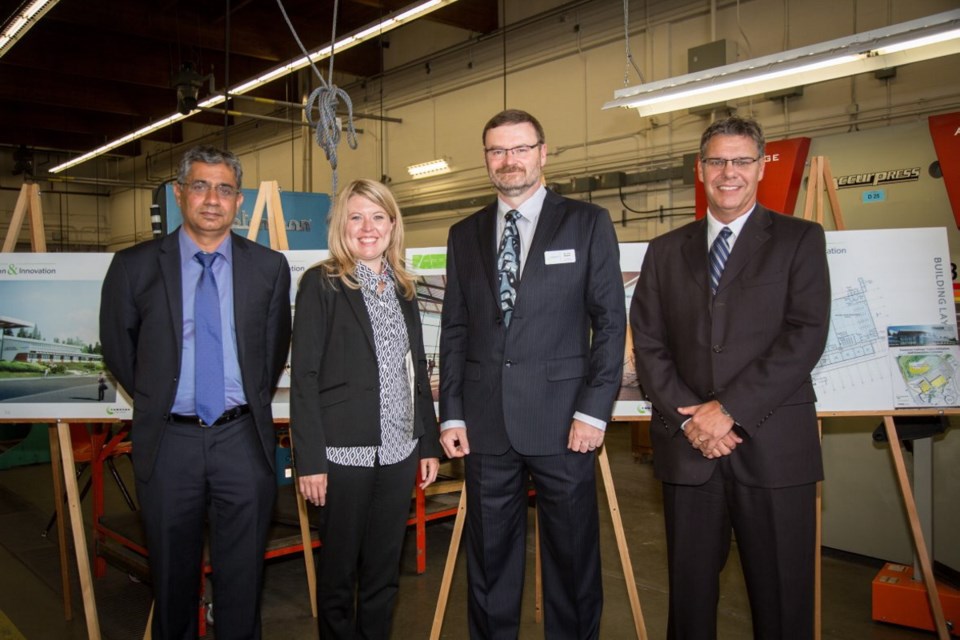About 24,000 square feet of space is being converted into a specialized lab at Camosun College’s Interurban Campus where students will work on advanced manufacturing requests for industry — a first for a Canadian college.
“This represents a real game-changer for us,” Tim Walzak, the college’s director of Camosun Innovates, said Thursday. “It greatly expands our space to do some very creative things.
“Our prime focus is building inter-disciplinary space to allow our students and faculty to work on real world problems with our local industry partners.”
Two industrial bays will be fitted out for what is called the Interaction Lab by spring 2016. The space is within an area that has been used for trades, but is being freed up now that a new trades building is being built.
The Camosun lab is receiving $1.5 million in funding from Western Economic Diversification Canada. Another $527,000 is going to the University of Victoria to improve its Centre for Aerospace Research laboratory.
Industry partners approach Camosun for help sorting out challenges in a number of areas, whether technological or in the marketplace. Partners include Viking Air, Scott Plastics, StarFish Medical and Victoria Shipyards.
“We then marshal our resources, our expertise, build teams of students and faculty, and try to get the right kind of funding in place to help them solve their problems,” Walzak said.
Existing equipment at Camosun will form the nucleus of the new lab, he said. “But this particular initiative is brand-new and represents a considerable change for Camosun.”
When Camosun talks about technology, that includes all applied disciplines, such as business, health and trades, said Tom Roemer, Camosun’s vice-president of strategic development.
Innovation is a catalyst that helps prepare students for jobs, he said. Industry has said it wants to hire people with a more comprehensive understanding of how a complex business operates and how individual elements interact.
For example, if a company creates a new product, there’s a business component to it, as well as market analysis, design, prototypes, proof of concept, manufacturing, automating manufacturing and supply chain.
“All of these things are often overlooked when people get technical training,” Roemer said. The lab will bring all this together “grouped around a project that comes from industry.”
This is one-of-a-kind facility in Canada, he said.
The labs will include 3D scanning and digital modeling, 3D printing, composite-materials mould fabrication, manufacturing simulation, integrated production and manufacturing designing.
Funds to UVic will see it add equipment and upgrade its laboratory to support the design, development, commercialization and certification of unmanned aerial vehicles and payloads at its aerospace centre.
Forest-fire management will be one of the applications for the technology, UVic said in a statement. Other anticipated uses for aerial vehicles include wildlife monitoring, applications for agriculture, mining exploration using remote sensing technology and search and rescue.
UVic has industrial partners such as Bombardier Aerospace, Rigid Robotics, Terra Remote Sensing and Boeing.



